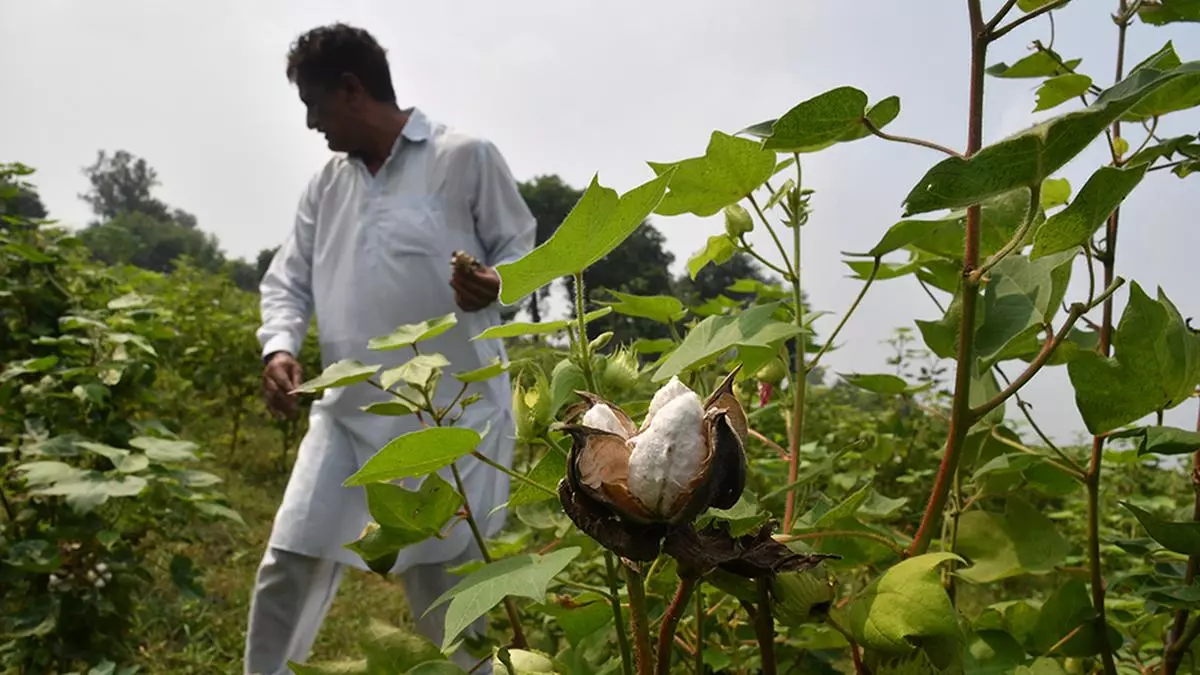Indian cotton farmers face labour pangs
Baldev Singh, a farmer about 20 km from Bathinda taluk in Punjab, plans to shift from growing cotton to moong (green gram) and Basmati rice this year.
“For two reasons, I plan to switch over from cotton. One, I am not getting a price matching the minimum support price. Two, I face problems of labour availability. Costs of labour are going up,” he told businessline over his mobile phone.
Singh may not be alone. Other farmers in Punjab, Rajasthan and, probably, Gujarat may join him. Some farmers such as Jaipal Reddy in Telangana plan to cultivate high-density planting system (HDPS) cotton.
NREGS problem
Industry sources said the acreage will likely be lower in Punjab and Rajasthan, in particular, given the labour problem. Both these States faced acute labour shortage last year. In addition, farmers faced problems from the National Rural Employment Guarantee Scheme Act (NREGS) as workers got around ₹300 a day.
“In Rajasthan, some farmers were even ready to part with a portion of their crop to the labour to harvest cotton bolls,” said a source, who did not wish to be identified.
However, Bhagirath Choudhary, Founder Director of Jodhpur-based South Asia Biotechnology Centre (SABC), said cotton farmers in Rajasthan do not depend on migrant labourers to the extent their counterparts do in Punjab and Haryana.
“However, the cotton-picking season did face some issues with labour availability last season in the State,” he said.
Picking costs
Telangana, one of the biggest cotton-growing States, faces an acute labour shortage, particularly for picking. Mostly a small-holder phenomenon, cotton competes with paddy in the kharif season for labour, making it difficult for farmers to find labour.
“Farmers were earlier paying ₹10/kg for picking cotton. The wages have now increased to ₹12,” said Raichur-based Ramanuj Das Boob, a Raichur-based sourcing agent for domestic mills and multinationals.
In the north, the problem was acute in the upper Rajasthan Ganganagar tracts and the Punjab regions adjoining it.
“I paid ₹12 a kg. Besides, I had to spend on transport to bring the workers and meet other expenses. Overall, I had to spend above ₹15 for cotton harvest Returns have been around ₹60,” said Singh.
Pink bollworm woes
“A good number of them find job guarantee work more remunerative and comfortable. If they find such work during the picking time, it will be tough for us to find labour,” Somanna, a farmer from Narayanpet in Telangana said.
SABC’s Choudhary said, “The labour was not coming to the field (in Rajasthan) as the productivity was low on account of the severe pink bollworm infestation. The low productivity due to severely damaged cotton bolls by Pink bollworm pest infestation discouraged the labourers from getting on to the fields.”
Severe pest infestation meant less cotton and more effort for the labour. “The first two pickings of the cotton crop cycle were okay, but farmers had labour availability issues for the third and fourth pickings, where the yields were very poor with damages caused by the pink bollworm,” he said.
Rajireddy, a farmer from Janagaon in Telangana, said, “Since all farmers in a village need them almost simultaneously during harvest, it gets tougher (to find labour). They charge anywhere between ₹300 and ₹500,” he said.
‘Developmental activities’
Industry sources say “developmental activities” in Bihar and Uttar Pradesh, in particular, have reduced the outflow of labour to other States, particularly northern India.
“If 100 people went out from these States earlier looking for farm jobs for six months starting from the kharif, now hardly 70 people are going out,” said an industry source, who did not wish to be identified.
A similar situation prevails in Gujarat, which gets it labour from Madhya Pradesh. “Gujarat farmers are finding it tought as many M.P. workers aren’t going there in search of jobs,” the source said.
People in Bihar and Uttar Pradesh are now finding jobs near their homes. “In Bihar, paddy, maize and wheat crops are keeping them close home. Some industrial units such as ethanol manufacturing have come up. They find it beneficial to stay in the home State,” said another source.
In Uttar Pradesh, industrial activities have picked up over the last couple of years and in particular, the northern States tops the country in the number of ethanol manufacturing units and the volume of production.
“The problem of labour availability is increasing. But, it is not yet the time to press the panic button,” said Rajkot-based Anand Popat, a cotton, yarn and cotton waste trader.
Jaipal Reddy has decided to go in for HDPS cotton this time. “It is becoming increasingly difficult to find labour for cotton farming. Last year, I tested it on one acre. This time I’m going to expand the area to 10 acres,” he said.
Choudhary called for creating awareness among farmers in North India to deal with the dreaded pink boll worm.
With inputs from Subramani Ra Mancombu, Chennai
